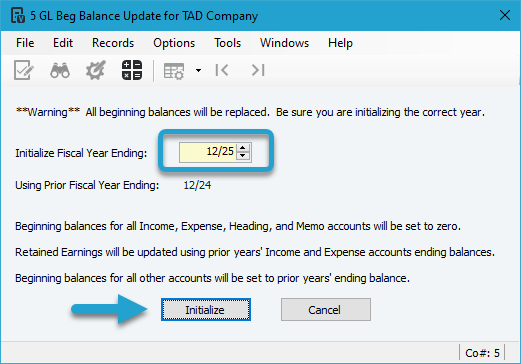Getting Started #
Make sure to import your GL balances to reflect the correct starting point for financial reporting after the conversion.
Template Info #
- Required Source Data
- GL Account
- Amount
- Optional Source Data
- N/A
- Additional Tips
- It’s recommended to bring in Lifetime-to-Date balances through the prior Fiscal Year. Then, import the monthly activity for the current year. This method makes it easier to isolate Year-to-Date numbers once you’re live.
- For example, if you’re going live in March 2025, you would import December 2024 LTD balances, followed by the January, February, and March 2025 monthly activity.
- Make sure Debit balances are positive, Credit balances are negative, and that your overall entry nets to $0.
- It’s recommended to bring in Lifetime-to-Date balances through the prior Fiscal Year. Then, import the monthly activity for the current year. This method makes it easier to isolate Year-to-Date numbers once you’re live.
- Basic Steps
- Download TAD Template
- Copy the Source Data
- Import the Records
- Post Open Batch
- Validate Imported Data
- GL Beginning Balance Update
Download TAD Template #
Open your source data file in Excel.
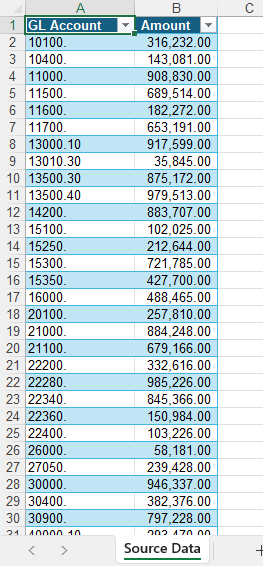
Click the Templates button on the left side of the ribbon.

If you’ve signed into TAD before, then you should receive the message below. Click Yes.
If you have not signed into TAD before, follow the Get Connected instructions.
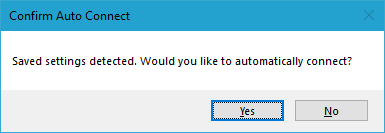
Select the Implementation Balance – GL Account Balances template.
Click the Download Selected button.
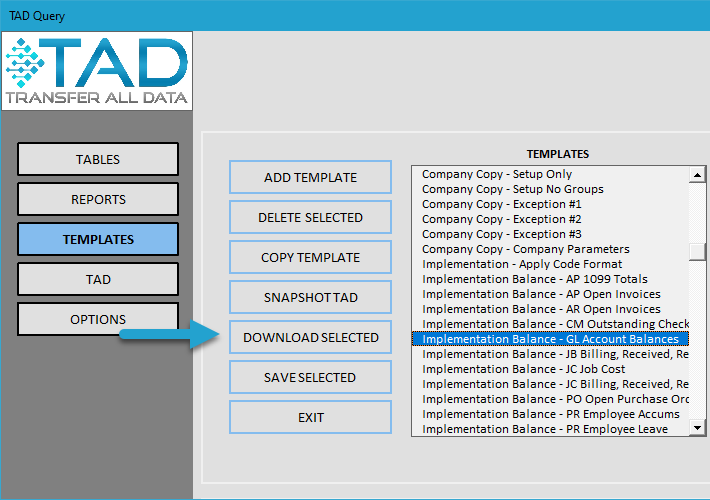
Enter the Batch Month for the balances you are loading.
This template can download with every GL Account listed in the table, allowing you to use a VLOOKUP to pull the balances from your Source Data worksheet.
However, the recommended approach is to copy and paste your GL Accounts and Balances from your Source Data worksheet. To do this, enter a value of 1 in the TopRows parameter. This will download a single record you can use as a guideline for the required column values.
Click the Download button.
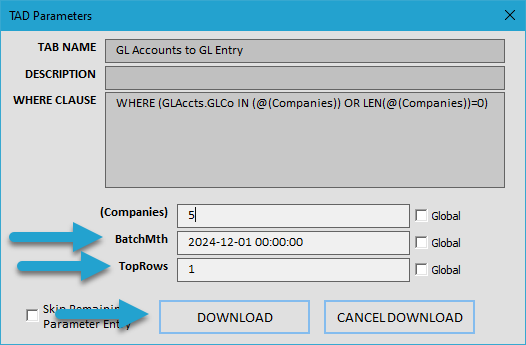
The GL Accounts to GL Entry sheet is used to import the balances.
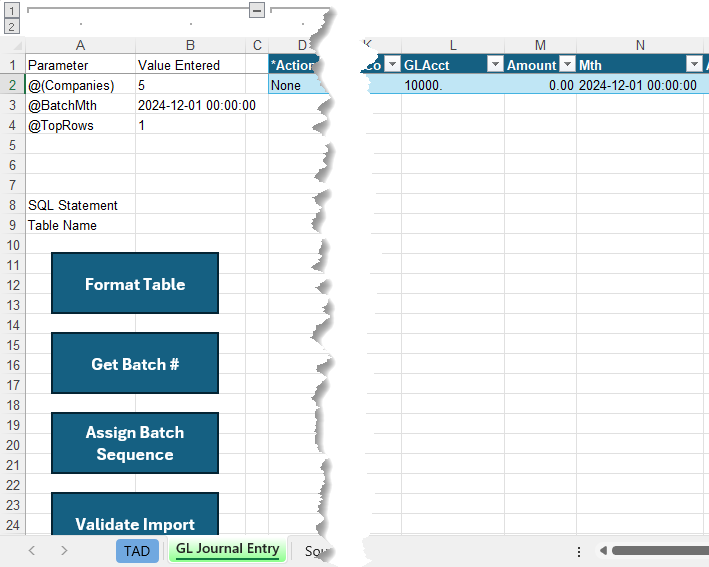
Copy the Source Data #
Copy and paste the source data into the GL Journal Entry sheet. If your source data layout matches the example above, this will be a single copy and paste since the GL Journal Entry columns are already in the same order.
If you downloaded the single record, the columns with formulas will auto-fill after you paste in your data.
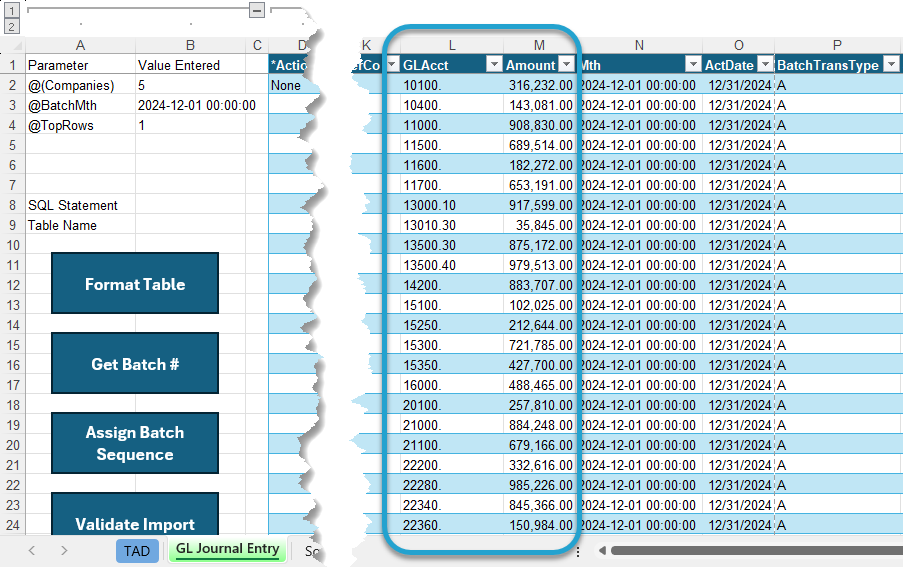
Import the Records #
Click the Format Table button to format the data you copied and to apply missing default values.
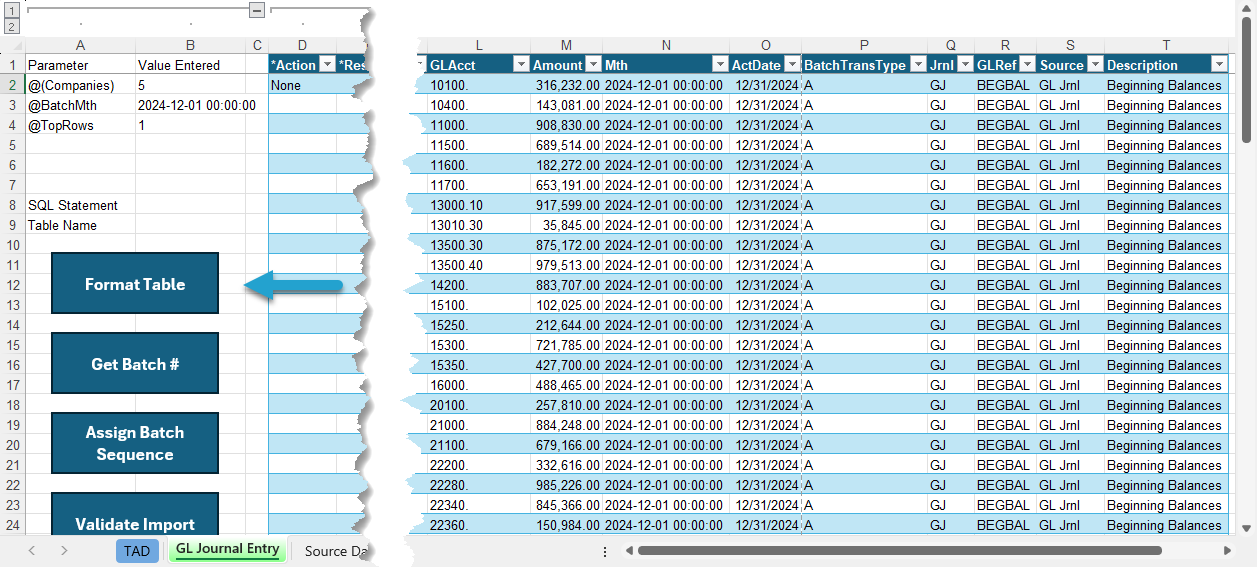
The *Result column will show Formatted for every record. You will see the default Company number applied.
Click the Get Batch # button to assign the next batch number.
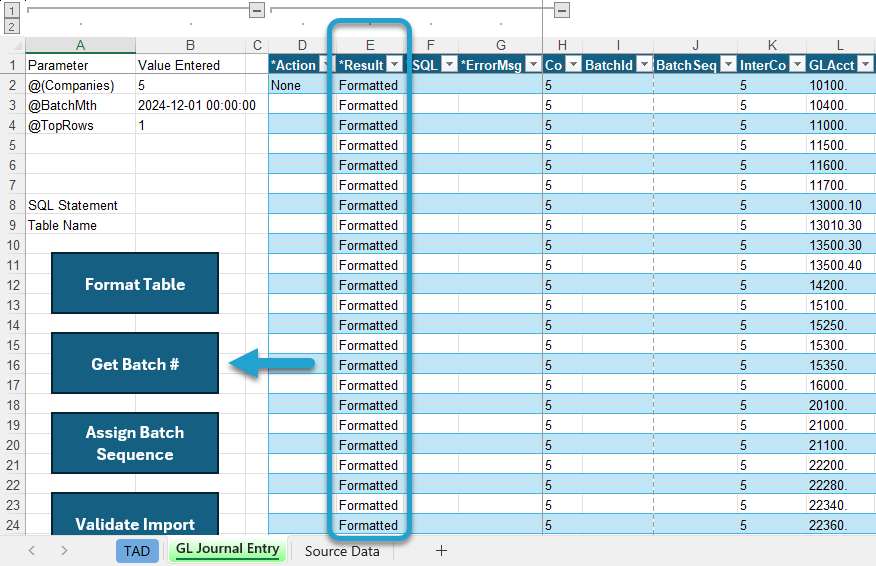
The *Result column will show Batch #XX Assigned for every record.
Click the Assign Batch Sequence button to assign a sequential value to each record.
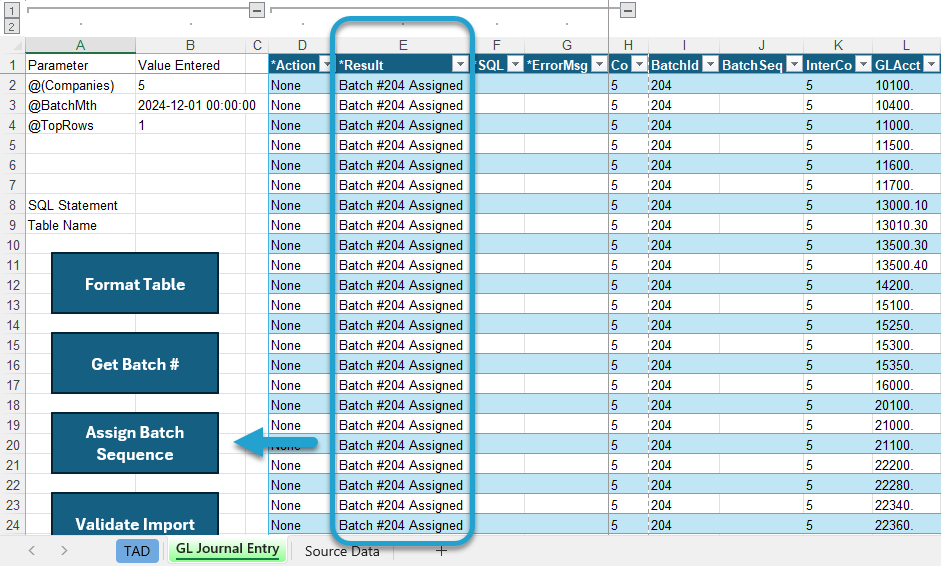
The *Result column will show Batch Sequence Assigned for every record.
Click the Validate Import button.
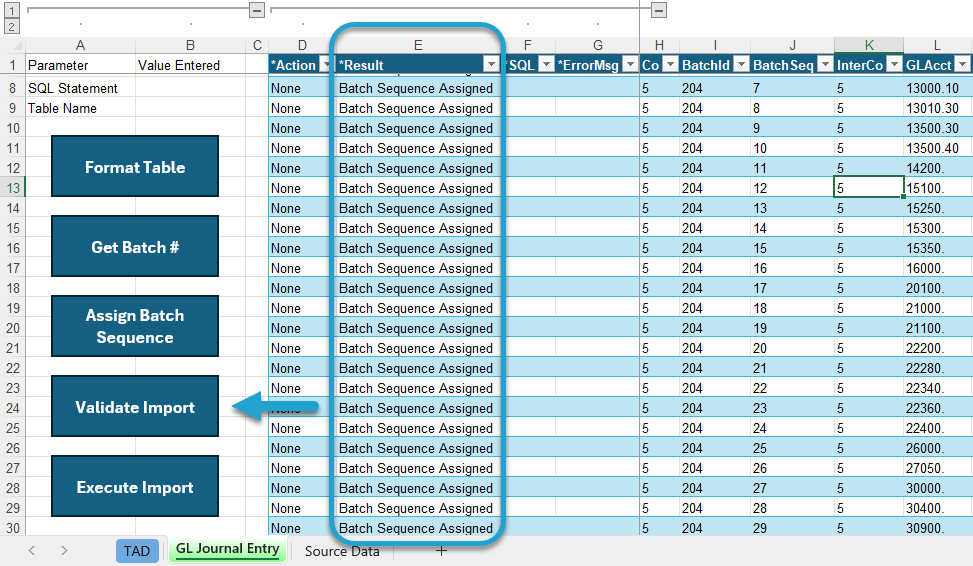
The *Result column will show Validated for every record. If this says Failure, then the *ErrorMsg column will provide the error.
Click the Execute Import button.
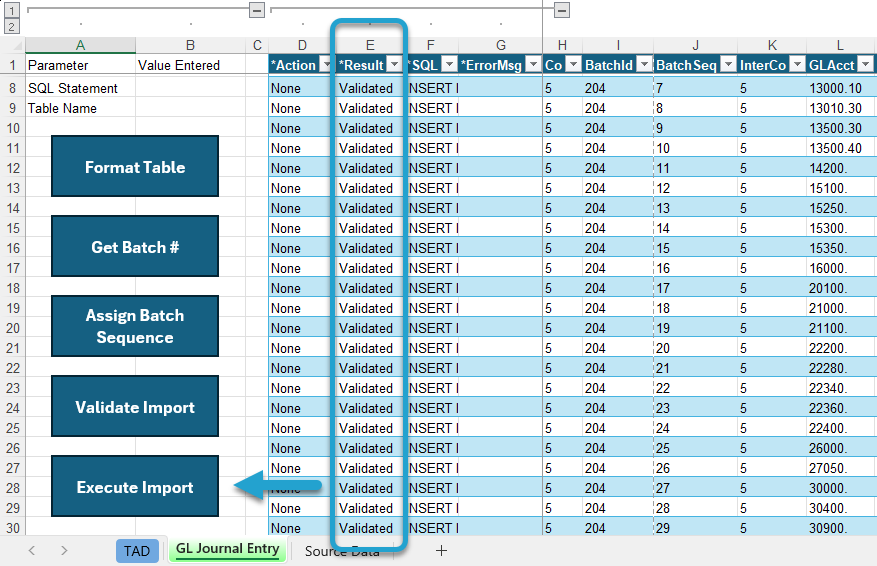
The *Result column will show Imported for every record.
That completes all steps needed in TAD. You can now open the batch in Vista to validate and post.
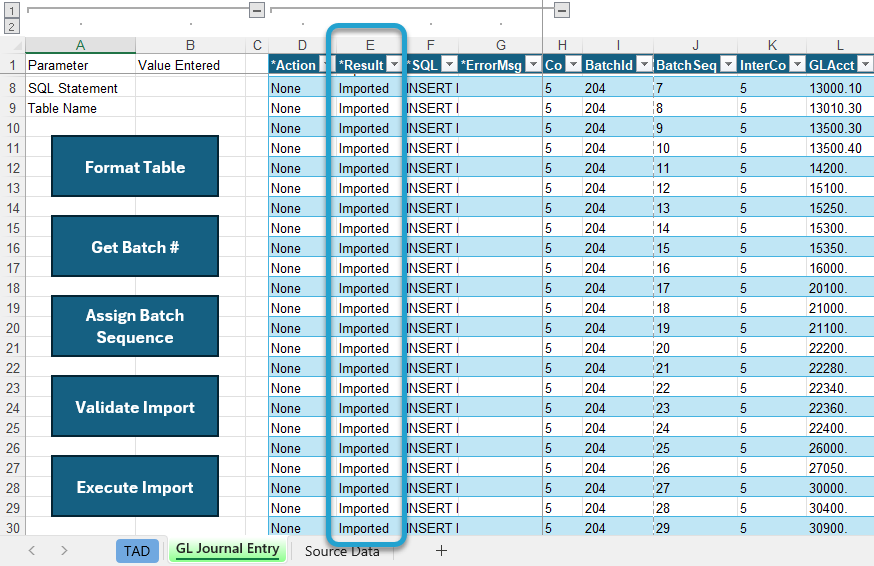
Post Open Batch #
Since you’re posting GL Activity, there’s no interfacing that needs to be turned off.
Open the batch in GL Journal Transaction Entry.
With the batch open, go to File → Process Batch, then click the Validate button followed by the Post button.
Validate Imported Data #
You can validate the GL Balances by running the GL Trial Balance report in Vista.
Enter your Company and the Ending Month for the month that you just imported.
Make all other parameters look like the image below.
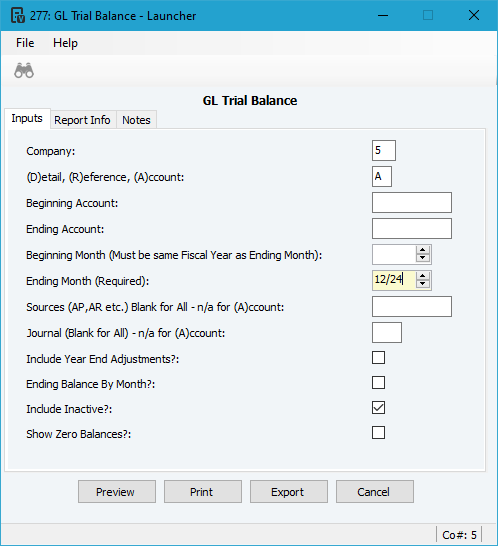
Verify the Ending Balance matches for each GL Account.
Repeat the same steps for all other GL Monthly Balances that need to be imported.
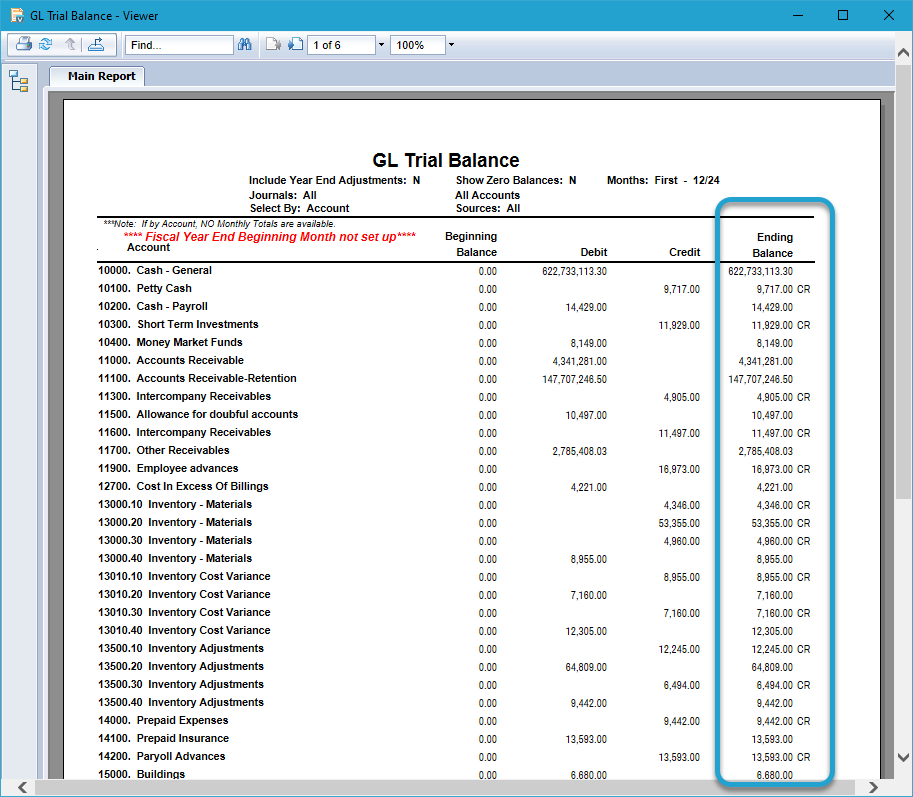
GL Beginning Balance Update #
After importing Fiscal Year Ending balances, you’ll need to initialize the Beginning Balances for the next fiscal year. This is done in the GL Beginning Balance Update form in Vista.
If you imported December 2024 balances, you’ll be initializing the beginning balances for December 2025.
Click the Initialize button.
If you make any changes to 2024 after the initialization, simply reinitialize the balances again.
